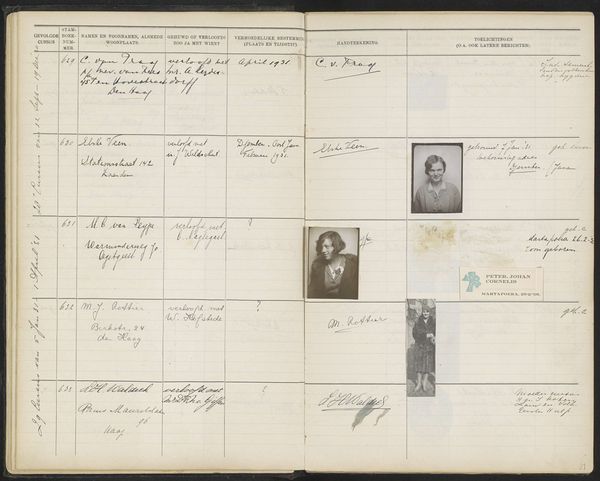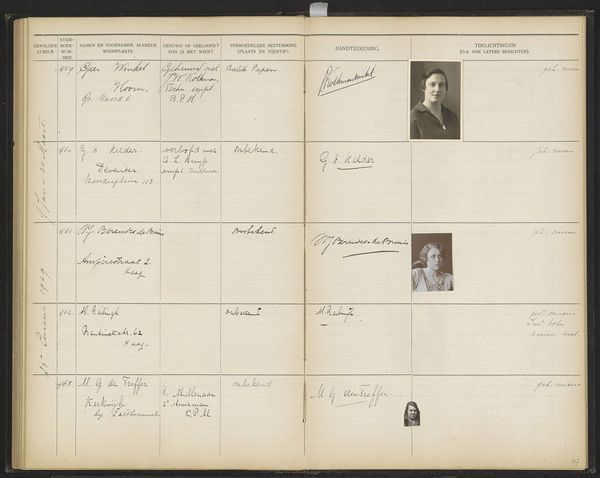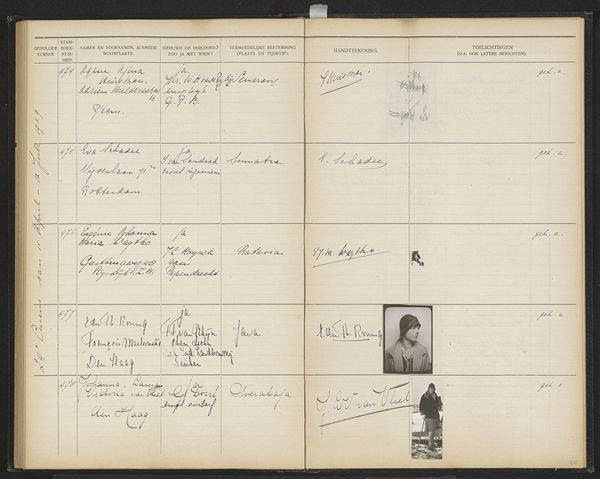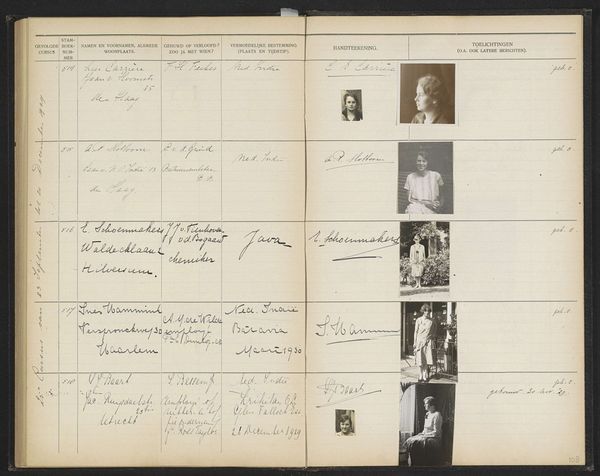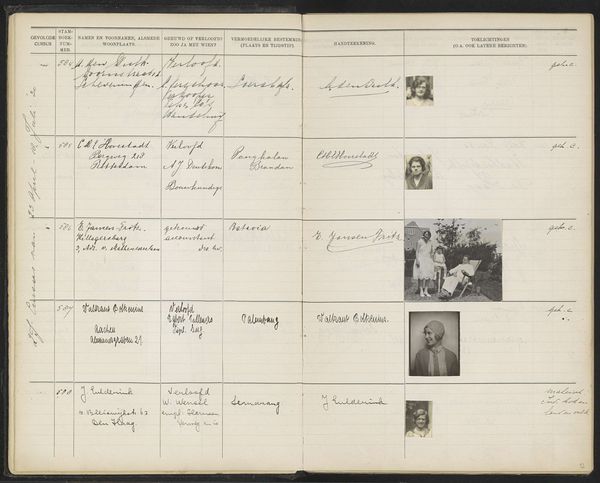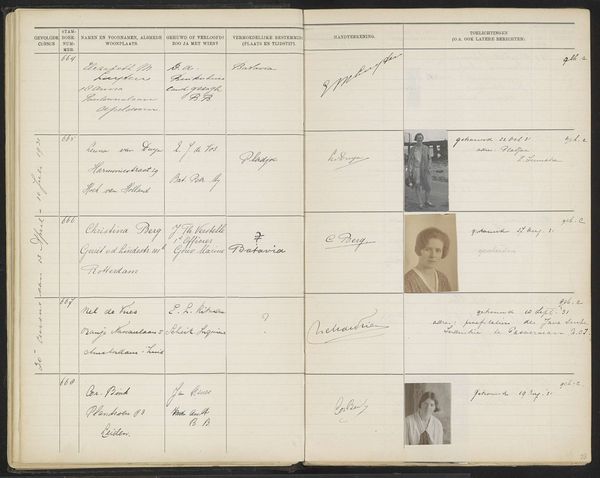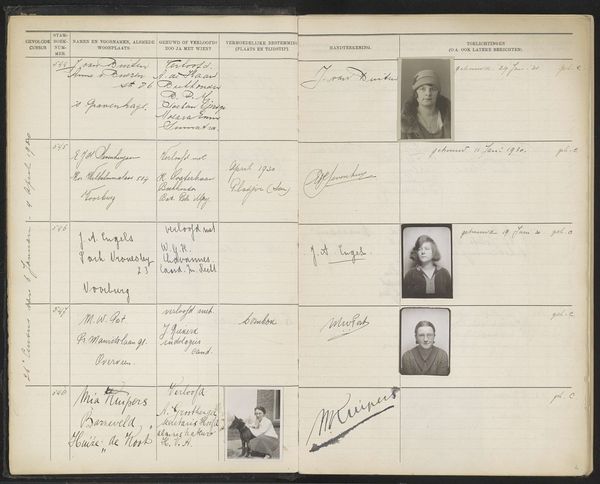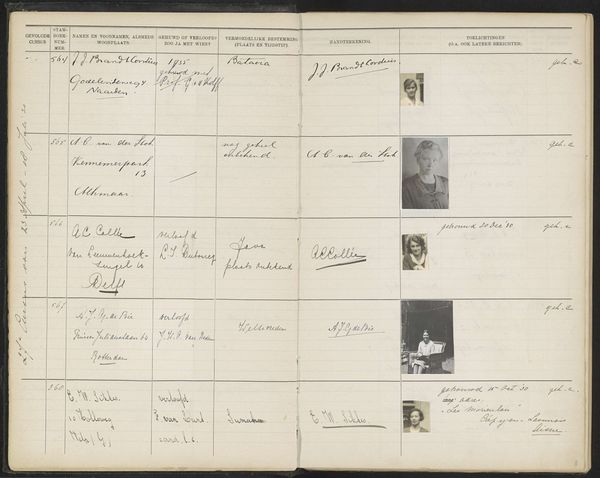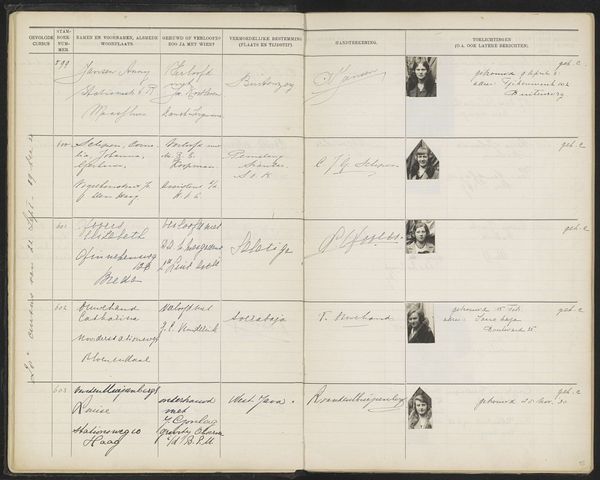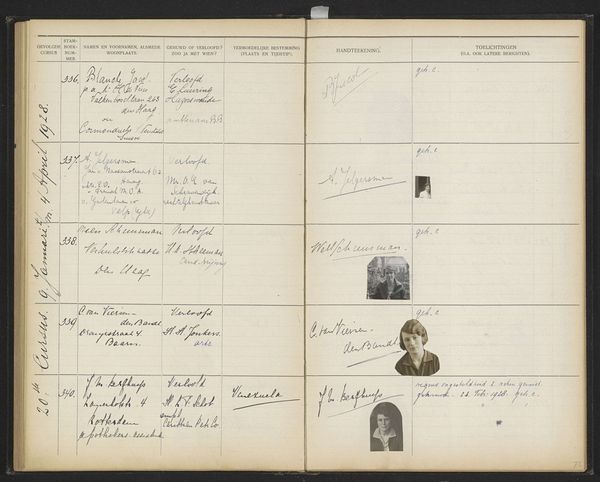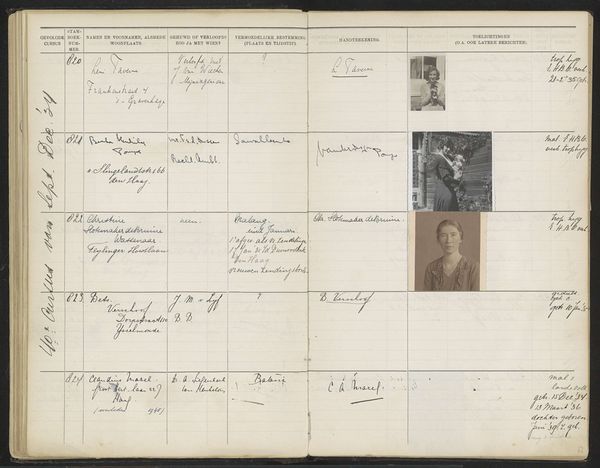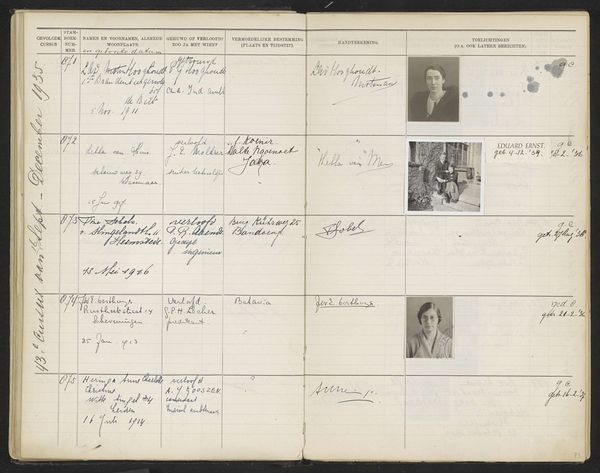
Blad 94 uit Stamboek van de leerlingen der Koloniale School voor Meisjes en Vrouwen te 's-Gravenhage deel I (1921-1929) Possibly 1929
0:00
0:00
drawing, paper, photography
#
portrait
#
drawing
#
aged paper
#
homemade paper
#
hand drawn type
#
paper
#
photography
#
personal sketchbook
#
hand-drawn typeface
#
journal
#
fading type
#
thick font
#
handwritten font
#
academic-art
#
historical font
#
calligraphy
Dimensions: height 340 mm, width 440 mm
Copyright: Rijks Museum: Open Domain
Curator: Looking at this aged page, “Blad 94 uit Stamboek van de leerlingen der Koloniale School voor Meisjes en Vrouwen te 's-Gravenhage deel I (1921-1929)", likely from 1929, we see what seems to be a page from a student registry for a Colonial School for Girls and Women. What strikes you most immediately about it? Editor: Oh, it has this fantastic patina, like aged parchment. All these little, faded photos pasted in, paired with gorgeous calligraphic signatures—it feels like stumbling upon secret lives tucked away in history, doesn’t it? I wonder who these women were…and why they were being recorded like this. Curator: Indeed, there is something very evocative about the archival quality. The artwork provides a glimpse into the personal stories and broader societal structures of the time. These photographs document students attending a school preparing women for roles within the Dutch colonial system. Each entry signifies not just an individual, but a cog in the machine of colonial power. Editor: Wow, you framed it with such powerful and needed social critique. I'm here just basking in the aged paper and fading ink! But thinking with your viewpoint, maybe those photos show their complex hopes of the students? Did they realize the colonial entanglements they were entering? Were their gazes toward liberation or subjugation? The photos provide small keyholes into big themes. Curator: Exactly! And we can interpret the handwritten entries, each student’s name and origin meticulously documented, as reflecting the administrative infrastructure that enabled colonial projects. We might also think about the gendered dimensions, about what types of training and preparation women were given and for what purpose. Editor: The different handwritings give a nice personal human vibe. In one case the script almost leaps off the page, in contrast to others, faded and reticent! Were those students from wealthy families, from colonized locales, from privileged groups or not? These are voices, frozen in time, but calling out to be discovered. The act of registry seems simultaneously benign, bureaucratic, and incredibly loaded. Curator: Absolutely. The juxtaposition between these individual records and their function as a tool for colonial administration demonstrates the intertwined nature of personal identity and political power. Even this single page resonates with implications for understanding historical narratives and societal structures. Editor: It gives us much to muse about! These faint inscriptions tell bigger stories than we may know. Thank you for bringing a necessary critical and theoretical understanding of history.
Comments
No comments
Be the first to comment and join the conversation on the ultimate creative platform.
